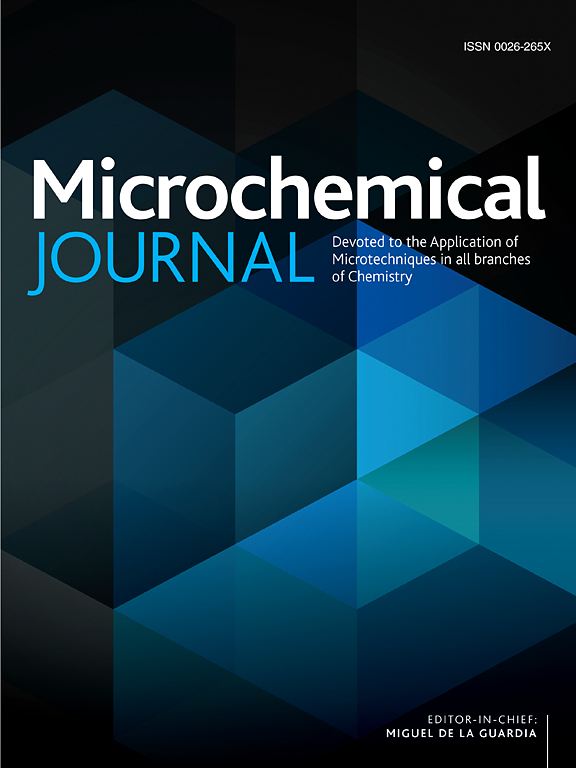A simple and expeditious RP-HPLC method for the simultaneous determination of commercially available seven pesticides formulations
IF 4.9
2区 化学
Q1 CHEMISTRY, ANALYTICAL
引用次数: 0
Abstract
For the purpose of simultaneously determination, a quick, easy, accurate and precise, high-performance liquid chromatographic analytical technique was validated for tolfenpyrad, pyraclostrobin, trifloxystrobin, azoxystrobin, fipronil, thiamethoxam, thiophanate-methyl, and azoxystrobin in their respective commercially accessible technical product compositions. Active components were separated chromatographically from additives and co-formulations using isocratic elution with 0.1 % orthophosphoric acid and acetonitrile in a 30:70 (v/v) at a flow rate of 1.0 mL per min on an Inertsil ODS-3 column (250 × 4.6 mm; 3.5 µm) with UV detection at 190 nm. With a 20-minute run time, the retention times for thiamethoxam, thiophanate-methyl, azoxystrobin, fipronil, pyraclostrobin, trifloxystrobin, and tolfenpyrad were found to be 2.96, 3.68, 5.98, 8.39, 11.31, 13.74, and 16.38 min, respectively. SANCO guidelines for precision, linearity, robustness, accuracy, LOD, specificity and selectivity were followed to approve the efficiency of this technique. Because all analyses were conducted using a single method and constant chromatographic settings, the suggested method offers several advantages, including rapid, sustainable, and eco-friendly analysis, as well as overall low costs. Developed method can be applied to water, food and different sources samples.

求助全文
约1分钟内获得全文
求助全文
来源期刊

Microchemical Journal
化学-分析化学
CiteScore
8.70
自引率
8.30%
发文量
1131
审稿时长
1.9 months
期刊介绍:
The Microchemical Journal is a peer reviewed journal devoted to all aspects and phases of analytical chemistry and chemical analysis. The Microchemical Journal publishes articles which are at the forefront of modern analytical chemistry and cover innovations in the techniques to the finest possible limits. This includes fundamental aspects, instrumentation, new developments, innovative and novel methods and applications including environmental and clinical field.
Traditional classical analytical methods such as spectrophotometry and titrimetry as well as established instrumentation methods such as flame and graphite furnace atomic absorption spectrometry, gas chromatography, and modified glassy or carbon electrode electrochemical methods will be considered, provided they show significant improvements and novelty compared to the established methods.
 求助内容:
求助内容: 应助结果提醒方式:
应助结果提醒方式:


